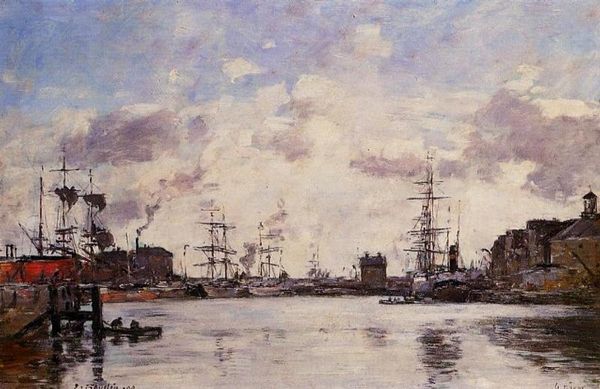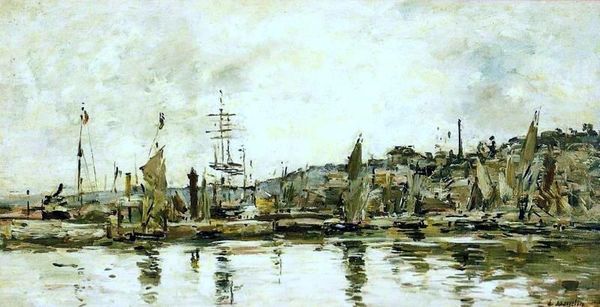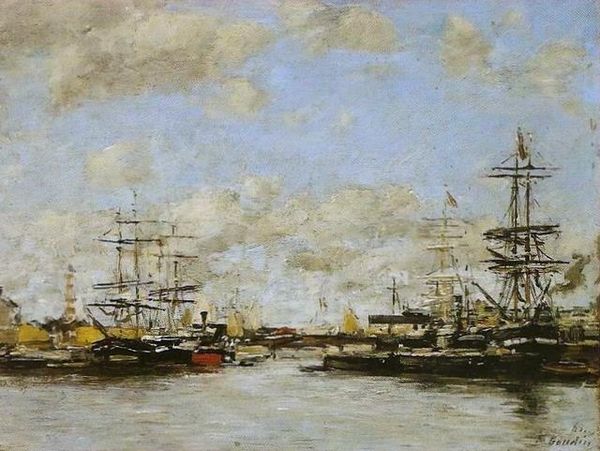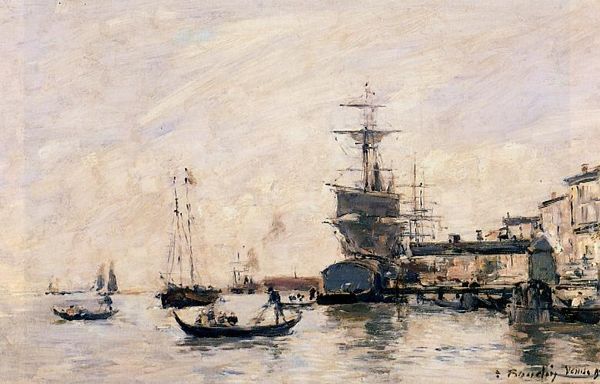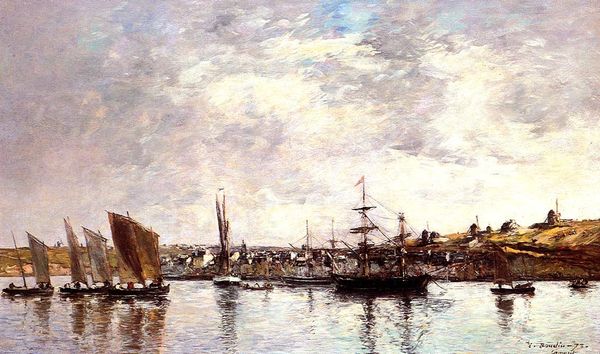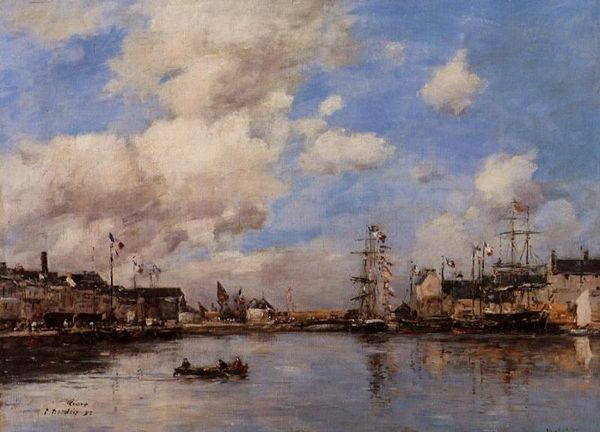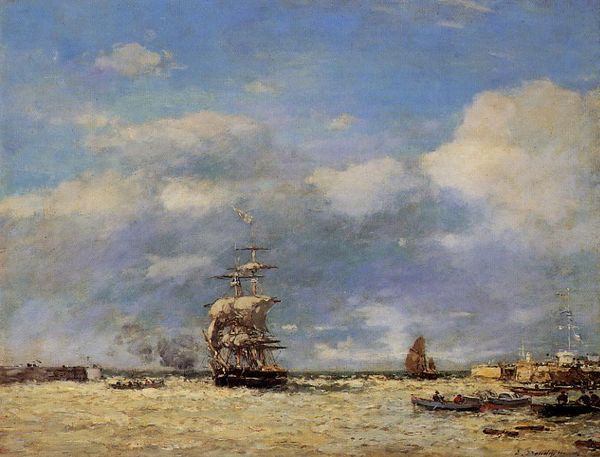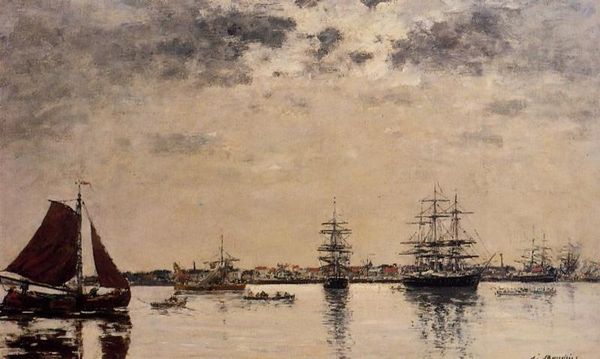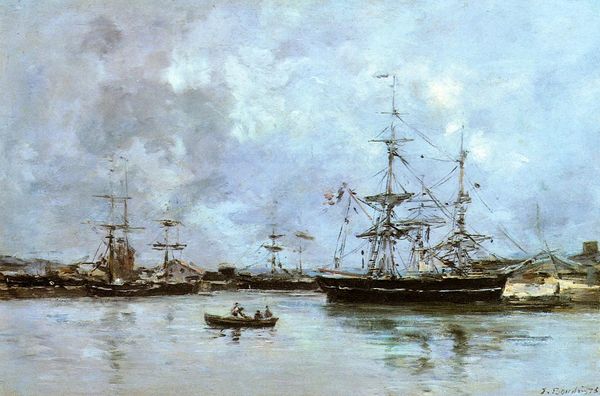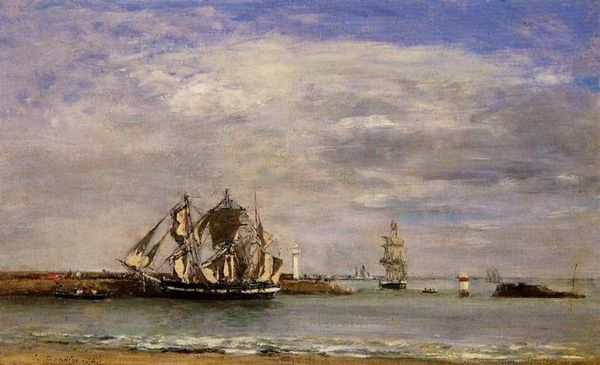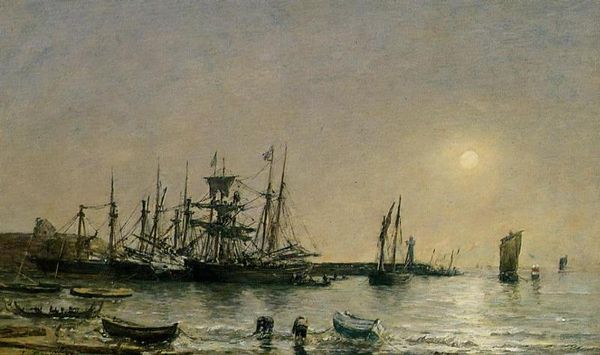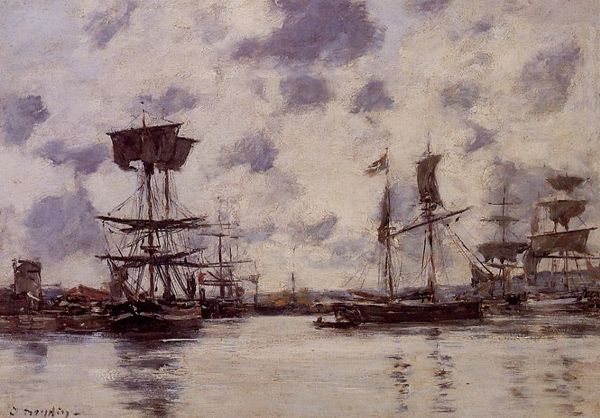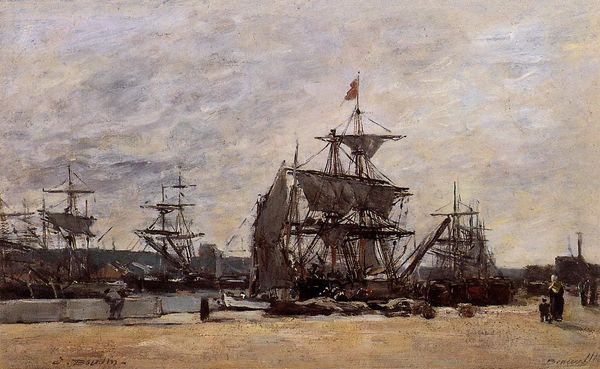
painting, plein-air, oil-paint
#
boat
#
ship
#
painting
#
impressionism
#
plein-air
#
oil-paint
#
landscape
#
impressionist landscape
#
ocean
#
water
#
sea
Copyright: Public domain
Curator: What a wonderfully hazy seascape. There's a stillness, a calmness to it despite the clear signs of human activity. Editor: That's a beautiful observation. This untitled oil painting is by Eugène Boudin. Although undated, we believe it represents a scene capturing ships at sea, likely painted en plein-air, a hallmark of Boudin's style. Curator: Indeed. Boudin’s approach highlights the everyday, specifically working-class life in port cities. Notice the ships but also the figures in smaller boats. These smaller figures are as integral as the warships; what we would call in contemporary art, human scale or the “figure in the landscape,” plays against an encroaching militaristic imperialism, suggesting that human drama outweighs this historical drama. How are these port cities facilitating and or resisting the encroaching arm of colonial expansion? Editor: An interesting intersectional reading of the artwork, focusing on identity, politics, and gender. Your view makes me consider how public fascination with the sea intersected with national and economic ambitions. Boudin wasn’t just painting pretty pictures; he was capturing the machinery of empire, and as we’ve discussed before, often subtly revealing class hierarchies. The ships themselves symbolize power, trade, and expansion—core tenets of European powers at this historical juncture. He’s doing something very similar to what Courbet did with rural peasantry, only here the protagonists are a port. Curator: Exactly, and situating his landscapes within the broader narratives of political economies asks critical questions around ownership, access, and spectatorship: who owns these boats? Who works them? What bodies have access to these bodies of water? These themes speak to today’s pressing challenges around the effects of globalized economies on access and accessibility across race, gender, and socio-economic divides. Editor: Those are powerful parallels to consider. It underlines art’s capacity to offer ongoing, layered interpretations across time, doesn’t it? Examining historical work through current lenses offers renewed understandings, pushing against simplified assumptions of a singular historical truth. Curator: Yes, a single truth discounts lived experiences which make us all distinct subjects. Editor: And as art historians, our job is to continue to analyze and interpret what's left behind, revealing new stories. Curator: For sure, pushing for open ended narratives of culture, art, and the societies in which they are fostered and circulated.
Comments
No comments
Be the first to comment and join the conversation on the ultimate creative platform.
